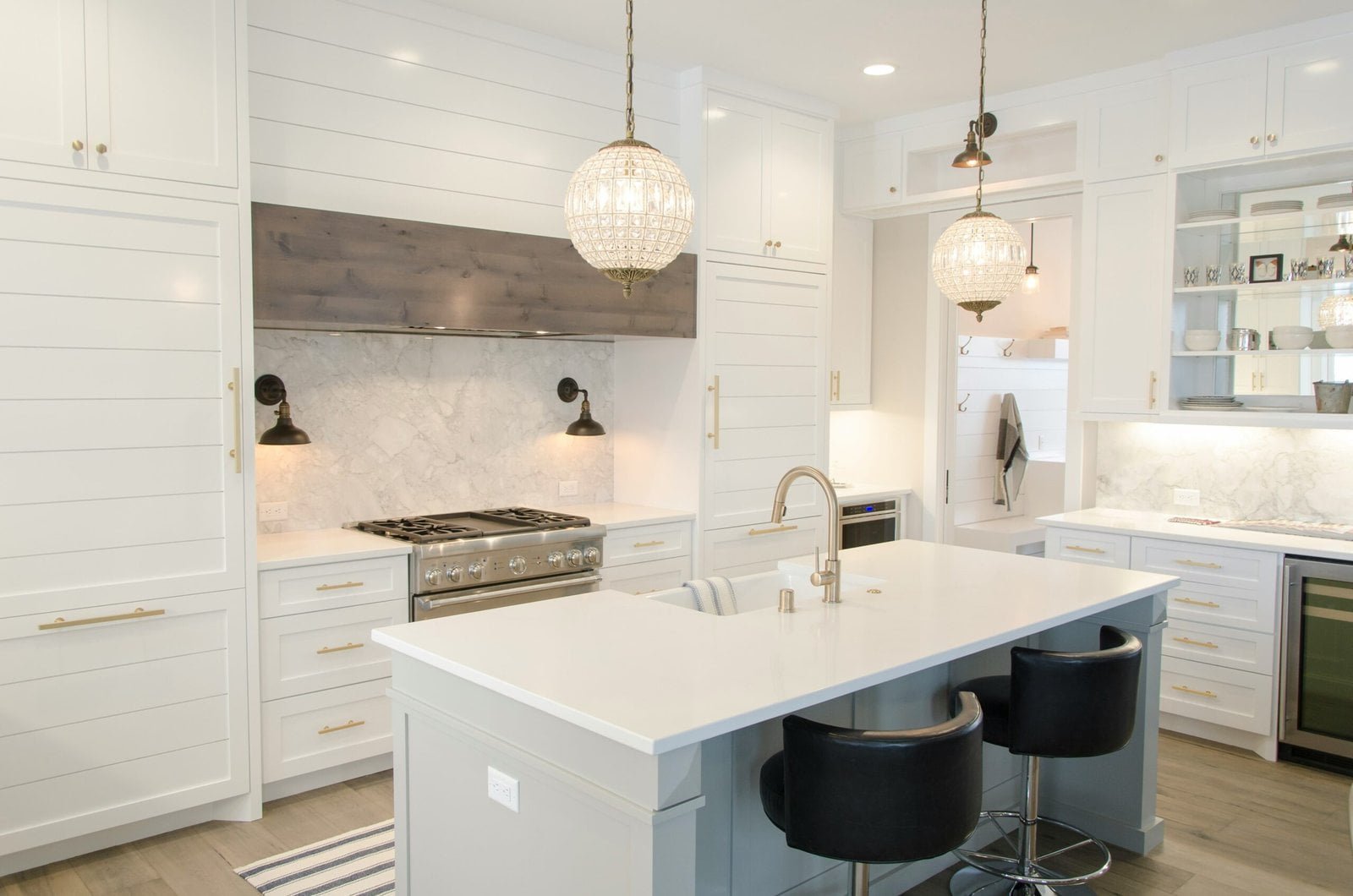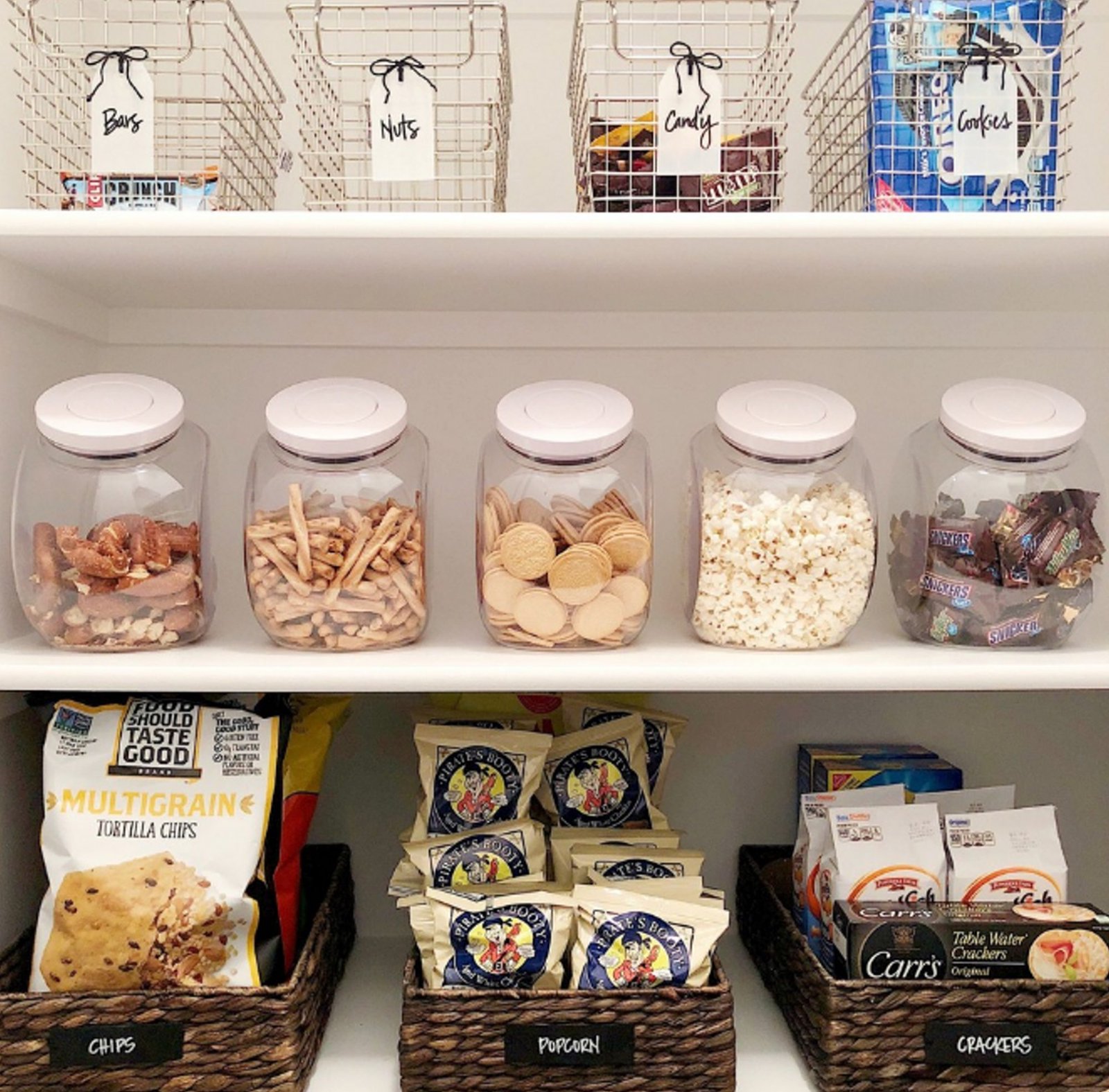Updating your kitchen can greatly enhance your home’s functionality and resale value. This blog post explores the importance of modern kitchen updates, assessing your current kitchen, setting a budget, incorporating smart technology, choosing sustainable materials, optimizing layout and storage, adding personal style, and deciding between hiring professionals and DIY. Learn how to create a visually appealing and efficient kitchen that suits your lifestyle and boosts your property’s appeal.
Introduction: The Importance of a Modern Kitchen
Updating a kitchen is one of the most valuable investments homeowners can make. A modern kitchen not only enhances the functionality of your home but also substantially boosts its resale value. With evolving lifestyles, the kitchen has transitioned from merely a cooking space to a central hub for family gatherings, social interactions, and even remote work. Consequently, a well-designed, modern kitchen can significantly improve daily living by offering enhanced efficiency, better organization, and a more pleasing environment.

In recent years, the concept of smart updates has gained traction among homeowners and designers alike. These updates leverage the latest technology and innovative design principles to create a kitchen that is not only visually appealing but also highly functional. Smart kitchens incorporate advanced appliances, integrated systems, and cutting-edge materials to streamline everyday tasks, reduce energy consumption, and promote a healthier lifestyle.
Read this article and do not forget to check our YouTube channel “Grig Stamate” for other amazing videos:
https://www.youtube.com/@GrigStamate
Tour of the Best 50 Modern Kitchen Designs, #2 (video)
For instance, smart refrigerators with touchscreens and internet connectivity can help manage grocery lists and meal planning more effectively. Similarly, automated lighting and temperature controls can create a more comfortable and energy-efficient space. By embracing these smart updates, homeowners can ensure that their kitchens remain relevant and functional in the years to come.
Moreover, a modern kitchen can significantly elevate the overall aesthetic of the home. Sleek cabinetry, high-quality countertops, and contemporary fixtures can transform the space into a visually stunning area that complements the rest of the house. By investing in a modern kitchen, homeowners can enjoy a more enjoyable and efficient daily routine while also enhancing the long-term appeal and value of their property.
Assessing Your Current Kitchen: What Needs an Update?
Before embarking on a kitchen update, it’s crucial to thoroughly assess the current state of your kitchen. This initial step allows you to identify which elements are outdated or worn out and pinpoint areas that could benefit from improved functionality or aesthetics. Begin by taking a comprehensive inventory of your existing kitchen appliances, noting any that are old, inefficient, or no longer meet your needs. Outdated appliances not only detract from the overall look of your kitchen but can also be less energy-efficient, increasing your utility costs.
Next, scrutinize the surfaces in your kitchen, including countertops, cabinets, and flooring. Look for signs of wear and tear such as scratches, stains, and discoloration. Worn-out surfaces can significantly impact the overall aesthetics of your kitchen, making it appear dated and uninviting. Additionally, consider the layout of your kitchen. An inefficient layout can hinder your ability to move freely and work efficiently. Pay attention to the flow between key areas such as the refrigerator, stove, and sink, often referred to as the kitchen triangle. A well-designed layout can make cooking and cleaning tasks more enjoyable and less time-consuming.
As you assess your kitchen, create a list of priorities based on both functionality and aesthetics. Identify what changes will have the most significant impact on your daily use of the kitchen and which updates will enhance the visual appeal of the space. For instance, if your countertops are severely damaged, replacing them might be a higher priority than updating cabinet hardware. Alternatively, if your kitchen layout is particularly cumbersome, consider reconfiguring the space to improve workflow.
By carefully evaluating the current state of your kitchen and prioritizing updates based on this assessment, you can ensure that your renovation efforts are both efficient and impactful, ultimately resulting in a more functional and attractive kitchen.
Setting a Budget: Balancing Cost and Quality
Establishing a budget before embarking on any kitchen update is crucial for ensuring a successful and stress-free renovation. A well-planned budget helps in balancing cost and quality, allowing you to make informed decisions that align with your financial constraints and design aspirations.
To start, research is key. Understanding the average costs of materials, labor, and other expenses gives you a realistic foundation to build your budget. Online resources, home improvement stores, and consultations with professionals can provide valuable insights into current pricing trends. Setting realistic expectations about what you can achieve within your budget is essential to avoid overspending.
Balancing cost and quality requires strategic decision-making. Identify areas where you can afford to splurge and where it’s prudent to save. For instance, investing in high-quality countertops and appliances can add significant value and functionality to your kitchen. On the other hand, opting for budget-friendly cabinets or fixtures can help offset some of the higher costs without compromising the overall aesthetics.
Planning for unexpected expenses is also critical. Allocating a contingency fund of about 10-20% of your total budget can provide a financial cushion for unforeseen issues such as structural repairs or last-minute changes. This proactive approach ensures that your project stays on track even when surprises arise.
Ultimately, setting a budget that balances cost and quality involves thorough research, realistic planning, and strategic allocation of funds. By prioritizing key elements and preparing for the unexpected, you can achieve a beautiful and functional kitchen update without financial strain.
Incorporating Smart Technology: Enhancing Efficiency and Convenience
Integrating smart technology into kitchen updates has become increasingly popular, offering a multitude of benefits that enhance both efficiency and convenience. One of the primary ways to modernize a kitchen is by incorporating smart appliances. For instance, smart refrigerators equipped with internal cameras allow homeowners to check their contents remotely via a smartphone app, reducing unnecessary trips to the grocery store. These refrigerators can also send notifications when items are about to expire, ensuring fresher food consumption.
Smart ovens and stovetops represent another leap in kitchen innovation. These appliances often come with Wi-Fi connectivity, enabling users to control them remotely. This feature is particularly useful for individuals who are often multitasking; they can preheat their oven while still at work or adjust cooking settings without being physically present in the kitchen. Some smart ovens even include recipe-guided cooking, which adjusts the cooking process based on the specific dish being prepared, guaranteeing optimal results every time.
Lighting systems have also seen significant advancements through smart technology. Smart lighting solutions, such as those offered by Philips Hue or LIFX, allow homeowners to customize their kitchen’s lighting through voice commands or smartphone apps. These systems can be programmed to adjust lighting intensity and color temperature, creating the perfect ambiance for any cooking or dining experience. Additionally, motion-sensor lights can enhance energy efficiency by ensuring that lights are only on when the kitchen is in use.
Home assistants like Google Home or Amazon Alexa play a pivotal role in creating a connected kitchen environment. These devices can control various smart appliances, manage shopping lists, set timers, and even provide step-by-step cooking instructions. By integrating a home assistant into the kitchen, users can streamline their cooking and cleaning processes, making everyday tasks more manageable and efficient.
Overall, the integration of smart technology in kitchen updates is not merely a trend but a significant enhancement to daily living. These advancements offer unparalleled convenience, energy efficiency, and improved culinary experiences, making the kitchen a more enjoyable and functional space.
Choosing Sustainable and Durable Materials
When updating a kitchen, it is essential to consider both sustainability and durability in the selection of materials. Opting for eco-friendly and long-lasting options not only benefits the environment but also ensures that your kitchen remains functional and aesthetically pleasing for years to come. Sustainable materials for countertops, cabinetry, flooring, and backsplashes offer a plethora of choices that align with modern environmental consciousness.
For countertops, materials such as recycled glass, bamboo, and sustainable wood are excellent options. Recycled glass countertops, for instance, are made from repurposed glass, reducing waste and conserving natural resources. Bamboo, known for its rapid growth and minimal environmental impact, provides a sturdy and renewable choice. Similarly, sustainably harvested wood ensures that forests are managed responsibly, preserving ecosystems while providing a timeless, elegant look.
Cabinetry is another crucial aspect where sustainability can be integrated. Opt for cabinets made from FSC-certified wood, which guarantees that the wood has been sourced from responsibly managed forests. Additionally, cabinets constructed from reclaimed wood can add unique character to your kitchen while promoting recycling and reducing deforestation. For the environmentally conscious, consider cabinets with low-VOC finishes to improve indoor air quality.
Flooring options have also evolved to include sustainable and durable choices. Cork and linoleum are notable examples. Cork flooring is harvested from the bark of cork oak trees without harming the tree, making it a renewable resource. It is also resistant to moisture and provides a comfortable, cushioned surface. Linoleum, made from natural materials such as linseed oil, wood flour, and jute, is biodegradable and durable, making it an excellent eco-friendly option.
Backsplashes, often overlooked, can also be updated with sustainable materials. Recycled glass tiles or ceramic tiles made from natural clay are both durable and aesthetically versatile. These materials not only contribute to a reduced environmental footprint but also offer easy maintenance and longevity.
Investing in high-quality, durable materials for your kitchen update brings long-term benefits. These materials are designed to withstand daily wear and tear, reducing the need for frequent replacements and thereby minimizing waste. Furthermore, sustainable choices often come with enhanced aesthetic appeal and unique characteristics that can elevate the overall look of your kitchen.
Optimizing Kitchen Layout and Storage
Optimizing the kitchen layout is essential for enhancing workflow and functionality. One of the foundational principles to consider is the kitchen work triangle. This concept involves the strategic placement of the stove, sink, and refrigerator, forming a triangle that allows for efficient movement between these key areas. By keeping these elements within close proximity, you can minimize unnecessary steps and create a more streamlined cooking experience.
Efficient storage solutions are another critical aspect of an optimized kitchen layout. Adequate storage can be achieved through the use of innovative cabinetry and organizational tools. For instance, deep drawers with dividers can house pots and pans, while pull-out shelves and lazy Susans can make use of corner spaces that are often underutilized. Additionally, vertical storage such as tall pantry cabinets can keep frequently used items within easy reach, reducing clutter and enhancing accessibility.
The importance of adequate counter space cannot be overstated. Ample counter space not only provides room for food preparation but also offers a place for small appliances, which can help keep the main work areas clear. To maximize counter space, consider integrating kitchen islands or breakfast bars. These additions can serve multiple purposes, from additional prep areas to informal dining spots.
Innovative cabinetry can further enhance storage by accommodating specific kitchen needs. For instance, cabinets with built-in spice racks, knife holders, and pull-out trash bins can significantly improve organization and accessibility. Furthermore, installing under-cabinet lighting can illuminate workspaces, making tasks easier and safer.
Incorporating these strategies into your kitchen layout can transform it into a highly functional and efficient space. By following the principles of the kitchen work triangle, utilizing efficient storage solutions, and ensuring adequate counter space, you can create a kitchen that not only meets your culinary needs but also enhances your overall cooking experience.
Adding Personal Touches and Style
When updating your kitchen, infusing your personal style can transform it from a functional space to a true reflection of your taste and personality. The kitchen is often the heart of the home, and making it uniquely yours can enhance both its aesthetics and your overall enjoyment of the space. Whether you lean towards modern, rustic, or minimalist design styles, there are various ways to achieve a look that feels both personalized and cohesive.
For those who favor a modern style, clean lines, sleek finishes, and a monochromatic color palette are key. Opt for stainless steel appliances, glossy cabinetry, and quartz countertops to create a contemporary feel. Incorporating pops of color through accessories or a statement backsplash can add interest without overwhelming the minimalist aesthetic.
If a rustic kitchen appeals to you, consider using natural materials such as wood, stone, and brick. These elements imbue warmth and charm, making the space feel inviting. Distressed finishes, farmhouse sinks, and open shelving are characteristic of this style. Subdued colors like earthy browns, soft greens, and creamy whites complement the rustic look and create a cohesive atmosphere.
The minimalist approach focuses on simplicity and functionality. Choose streamlined cabinetry, integrated appliances, and a neutral color palette to achieve a clean and uncluttered space. Minimalist kitchens often emphasize quality over quantity, so select a few high-quality pieces that serve both a practical and decorative purpose. Hidden storage solutions can help maintain the minimalist aesthetic by keeping surfaces clear and organized.
When selecting colors, finishes, and decorative elements, it’s important to ensure that they not only reflect your personal style but also harmonize with the rest of your home. Consider the existing decor and architectural features, opting for complementary hues and materials. Decorative elements, such as lighting fixtures, hardware, and artwork, can also play a significant role in personalizing your kitchen. These finishing touches can tie the space together and make it distinctly yours.
Hiring Professionals vs. DIY: Making the Right Choice
When embarking on a kitchen update, one of the first decisions you’ll need to make is whether to hire professionals or undertake a DIY approach. Each option has its unique advantages and drawbacks, and the right choice often depends on the specific aspects of the kitchen update you are planning.
Hiring professionals can significantly ease the process, providing expertise, efficiency, and a polished finish. One of the primary advantages is their extensive knowledge and experience, which can ensure that the job is done correctly and safely. Professionals can handle complex tasks such as electrical work, plumbing, and structural changes, which may be beyond the scope of most DIY enthusiasts. Additionally, their access to high-quality materials and tools can result in a more durable and aesthetically pleasing outcome. However, hiring professionals can be costly, and it’s crucial to budget appropriately for their services. The cost can vary greatly depending on the scope and scale of the project, as well as the region you live in.
On the other hand, a DIY approach can be more cost-effective, allowing you to save on labor expenses. It offers a sense of personal satisfaction and accomplishment, as well as the flexibility to work at your own pace. DIY projects are ideal for tasks such as painting, installing backsplash tiles, or assembling cabinetry, where the skills required are relatively straightforward. However, DIY projects can be time-consuming and may require a significant investment in tools and materials. Additionally, the quality of the work may not match that of a professional, and mistakes can be costly to fix.
When deciding which route to take, consider the complexity and scale of the project, your budget, and your skill level. For larger, more complex tasks, hiring a reputable contractor may be the best option. To find reliable professionals, seek recommendations from friends and family, read online reviews, and check credentials and previous work. For simpler, less critical tasks, a DIY approach may suffice, provided you are confident in your abilities and willing to invest the necessary time and effort.
Other related posts from our website:
https://howtobuildahouseblog.com/five-fresh-color-combinations-for-white-kitchens/
https://howtobuildahouseblog.com/all-about-non-standard-kitchens/
https://howtobuildahouseblog.com/bold-design-ideas-and-tips-for-modern-kitchens/
We sincerely hope that our video and post can help you.
Please, write your opinion in the comment section and do not forget to subscribe to our channel if you are new to our YouTube channel.
See you soon at another post.
Bye, Bye



No Responses